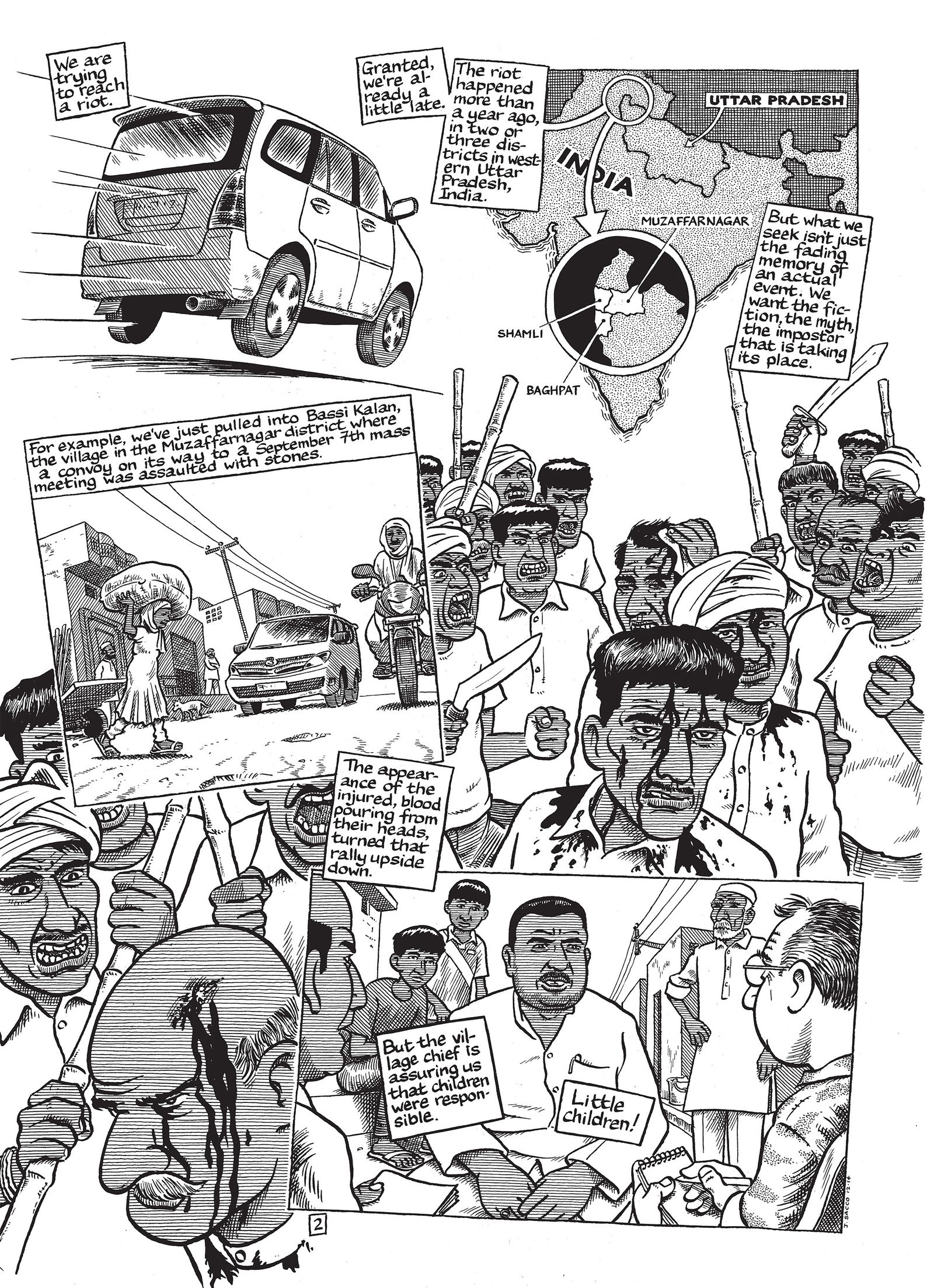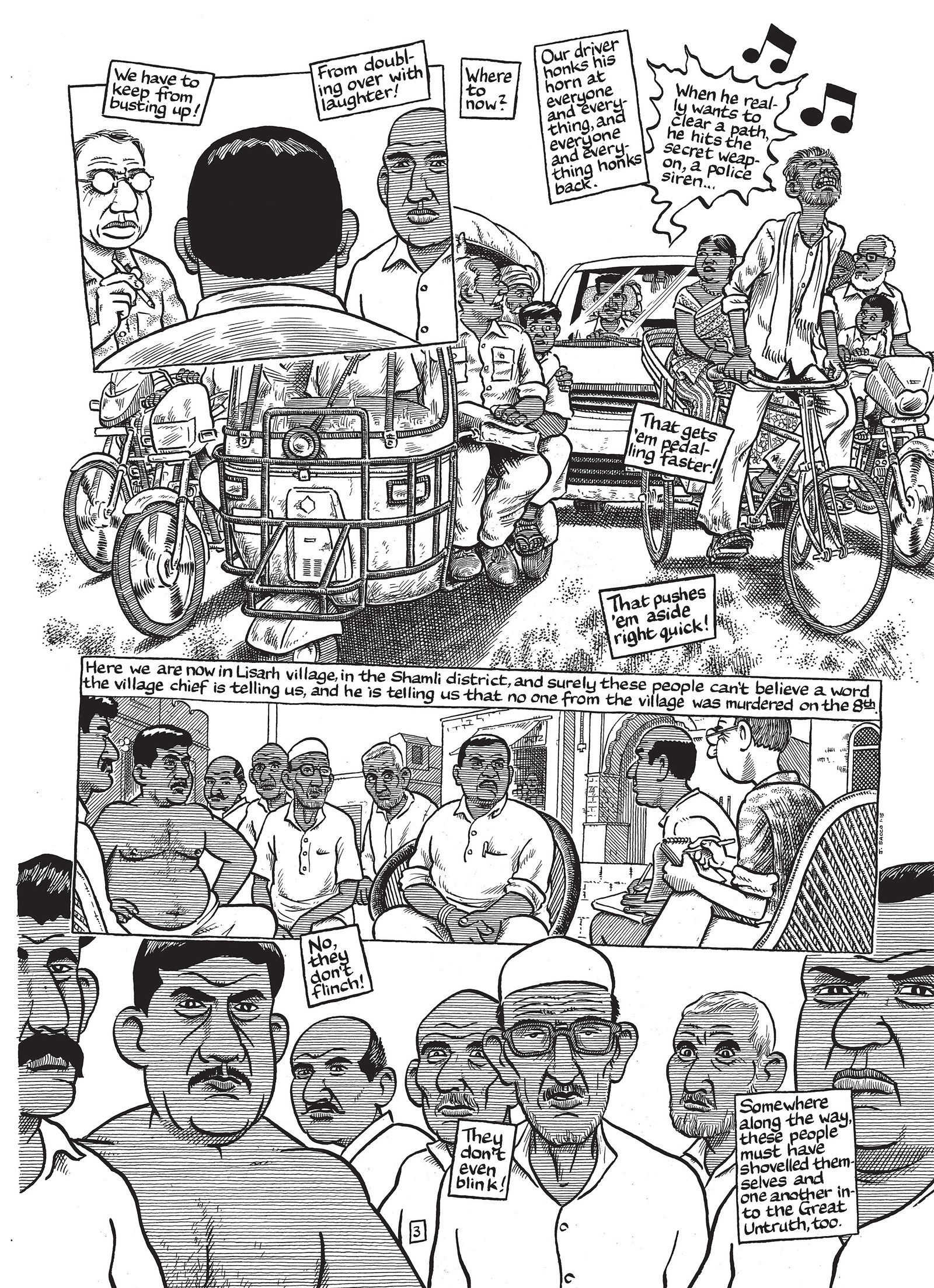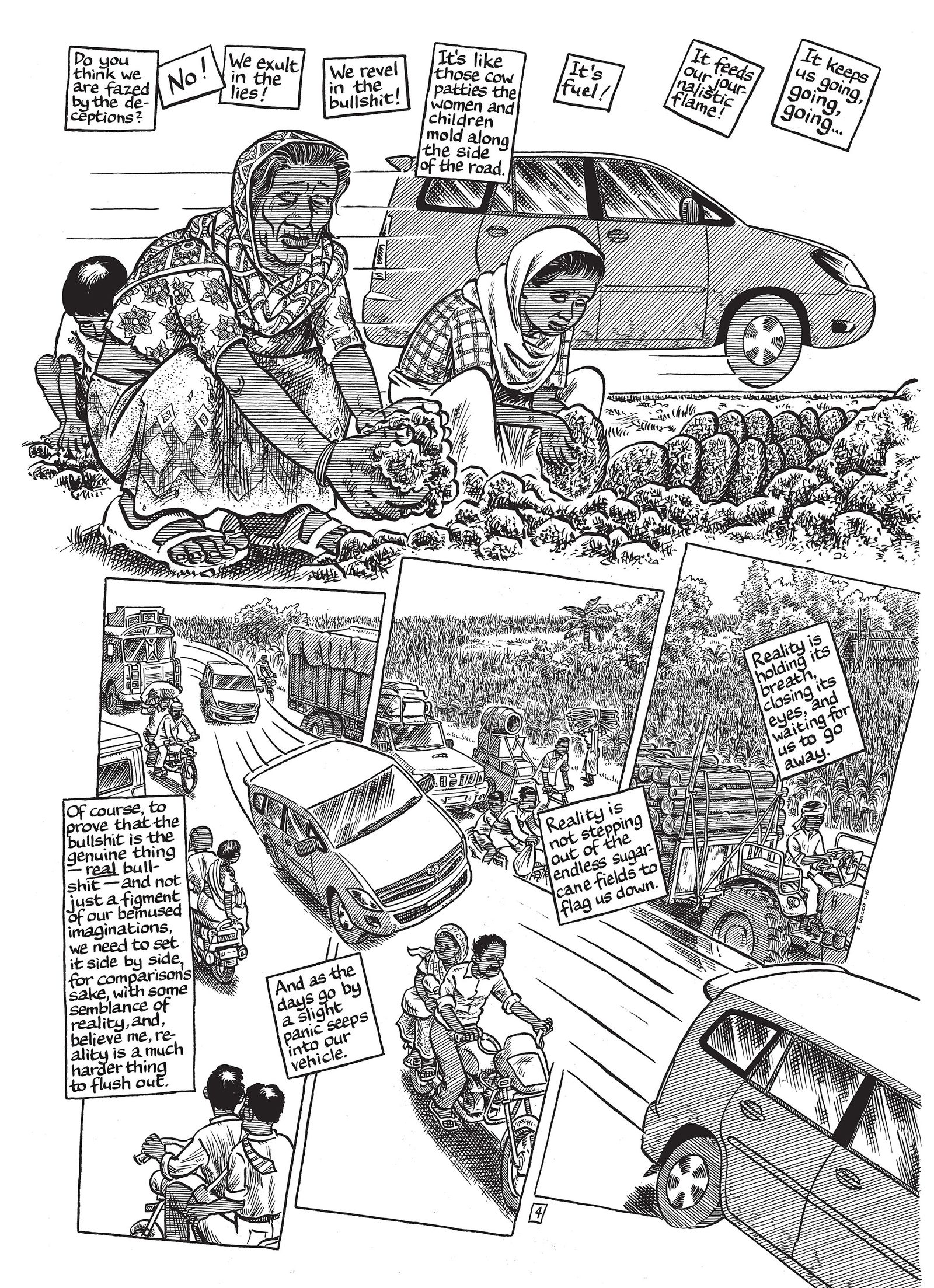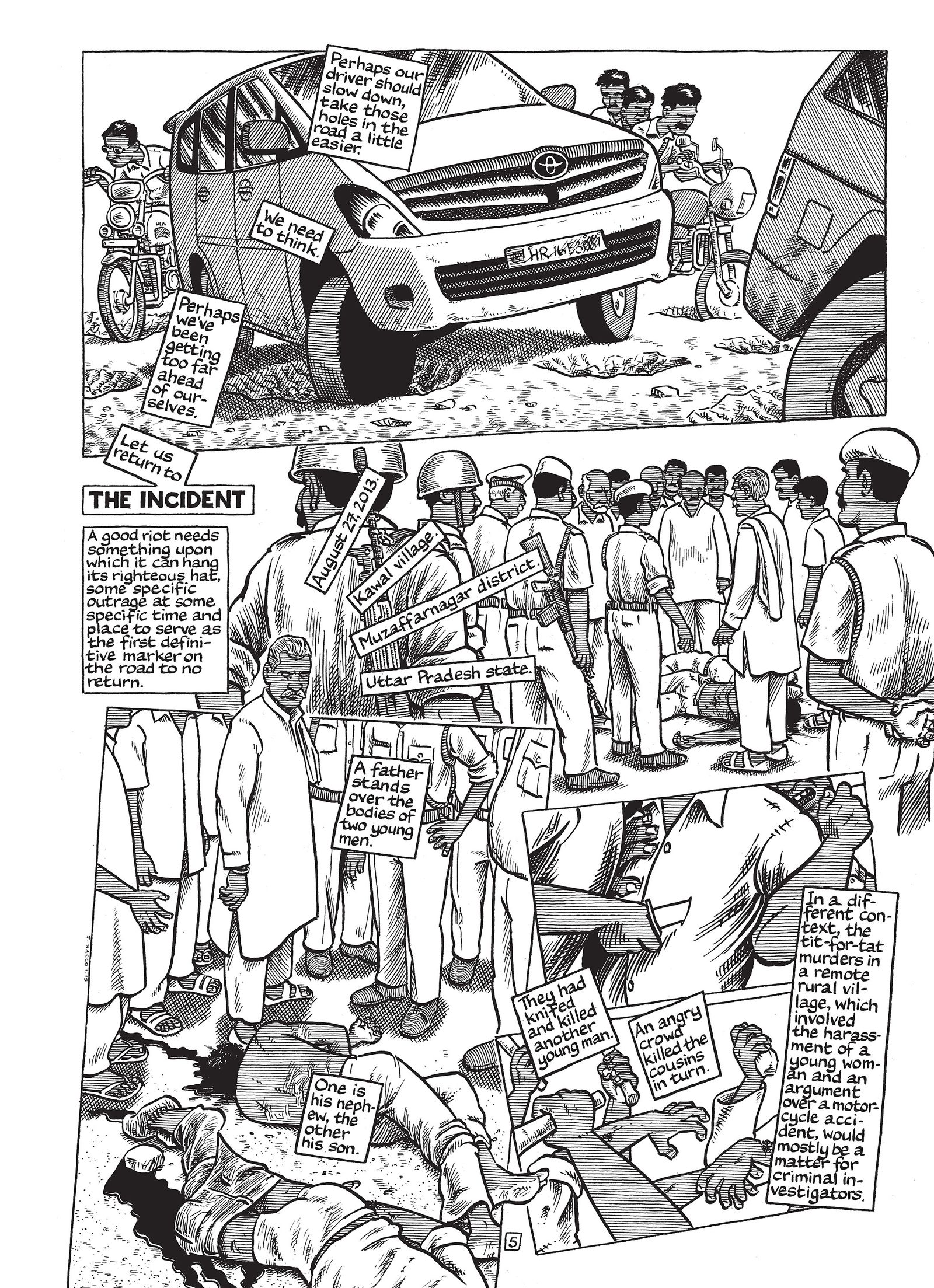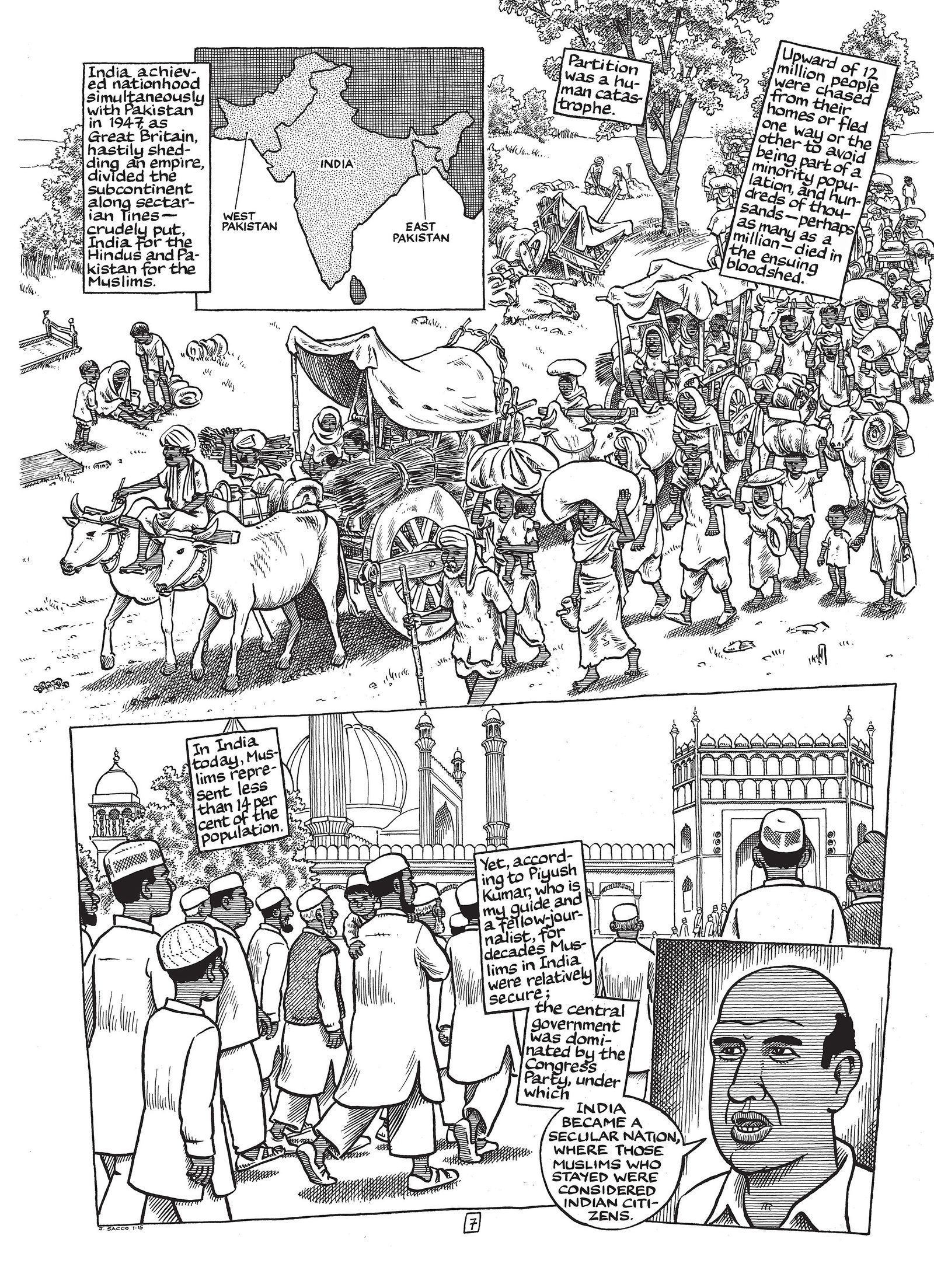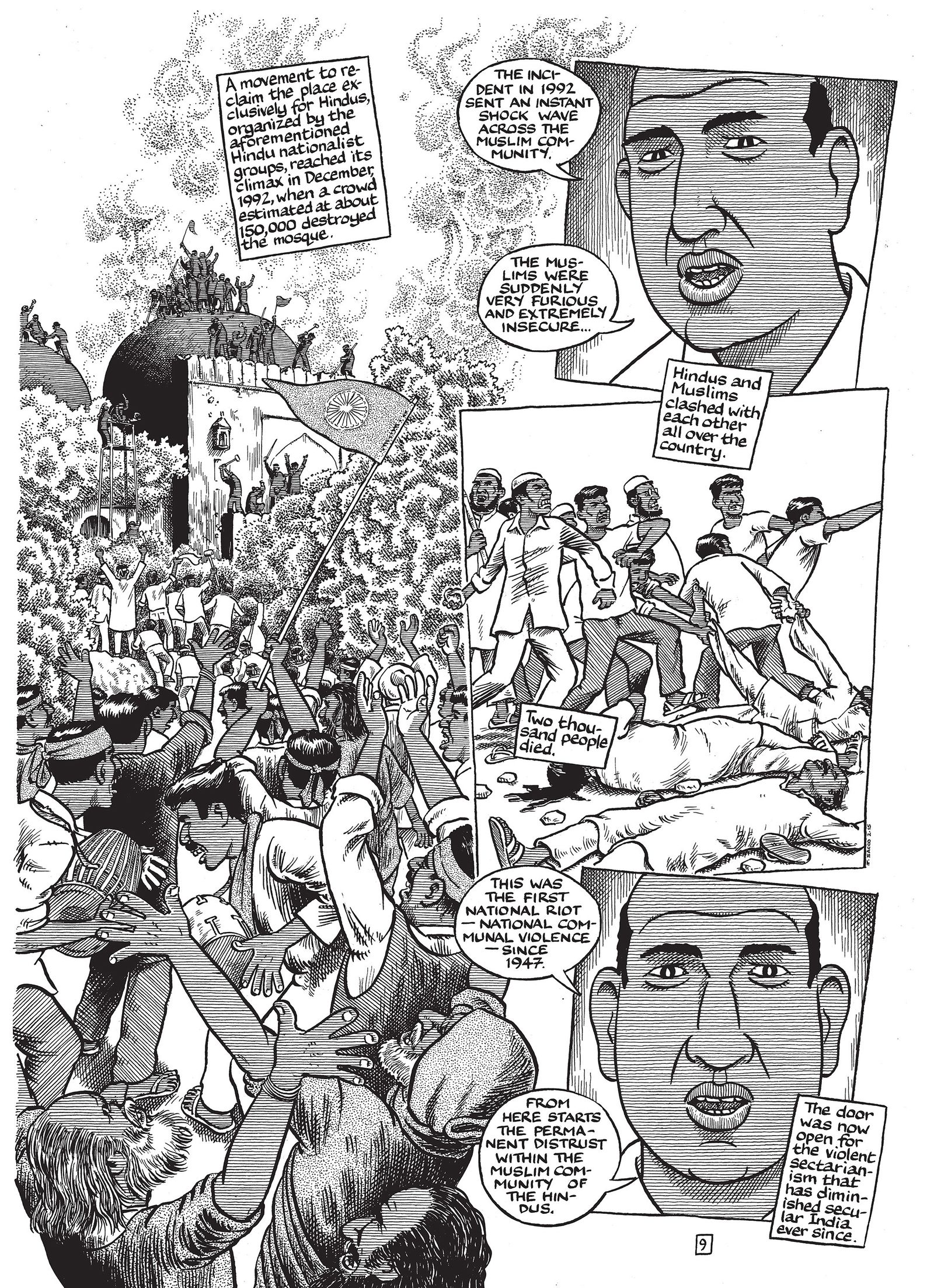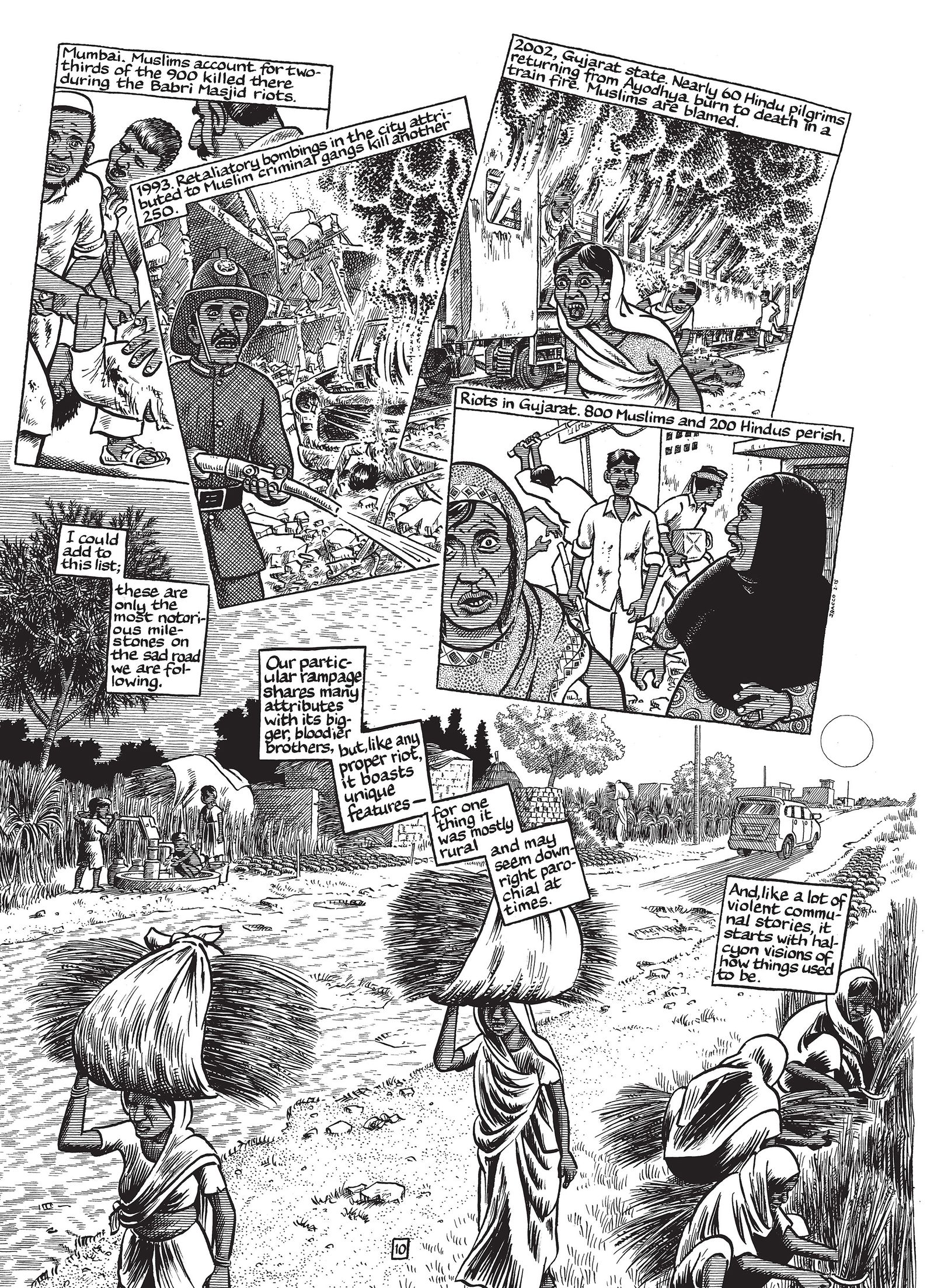A Cartoonist’s Journey to the Scene of a Riot
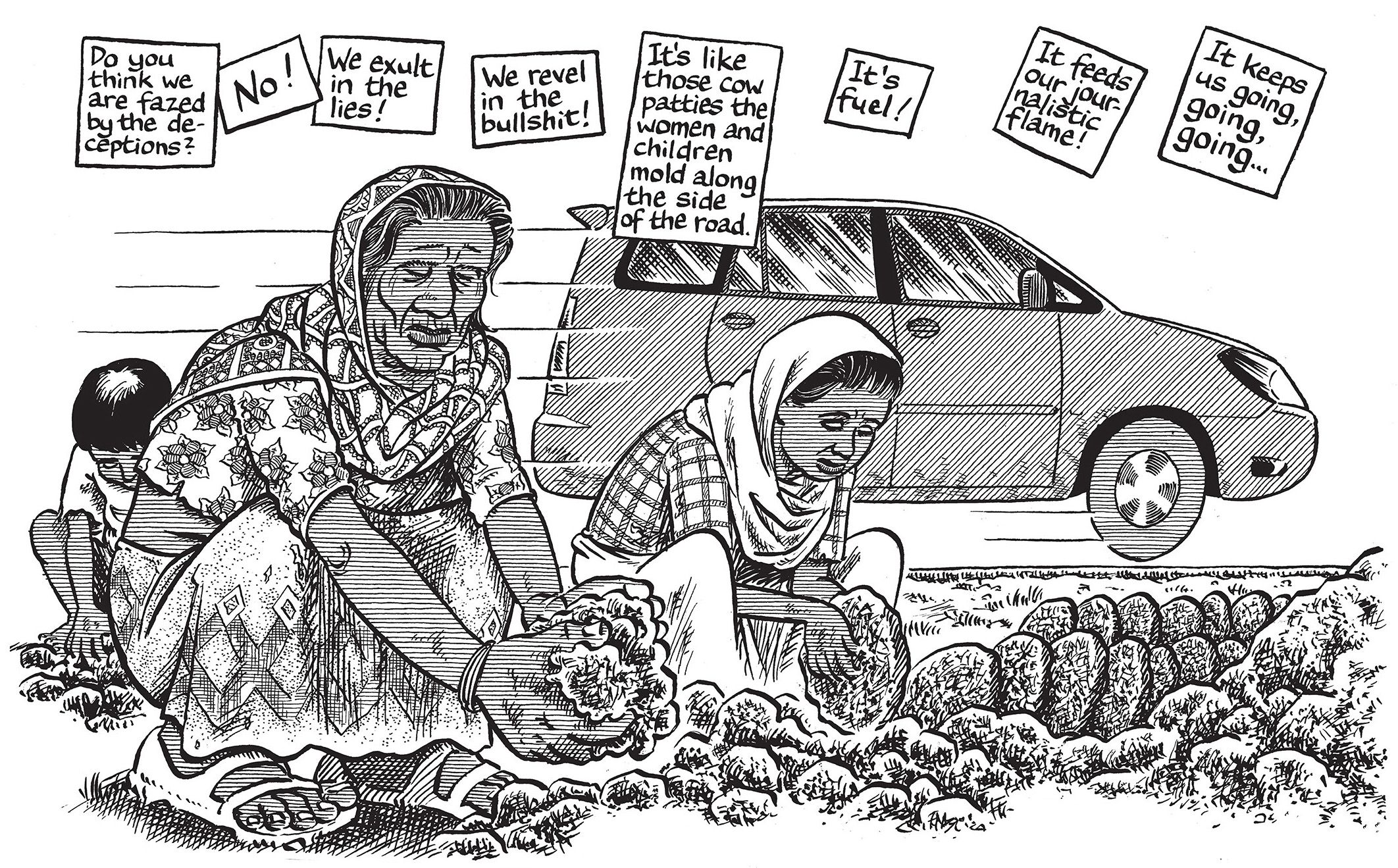
The Maltese-born Joe Sacco is the rare cartoonist with a journalism degree (and, maybe just as rare, a cartoonist with masterful journalistic chops). Sacco’s latest book, “The Once and Future Riot,” coming out this month from Metropolitan Books, focusses on the aftermath of the 2013 Muzaffarnagar riots in Uttar Pradesh, in northern India. The book uses the cartoonist’s tools—visual details, captions, balloons, maps, sequential narratives—to tell the story of Sacco’s own reporting: his conversations with victims, village leaders, witnesses, and officials.
Sacco’s style, forged years ago in the tradition of independent comics, favors an autobiographical mode, and he continued to operate in that mode even as his work began to take a journalistic turn. “I began to appreciate what my drawn character signalled,” he told us, that journalism “is shaped by the journalist’s cultural biases and subjectivities, crafted by a fallible person trying—with different degrees of success—to understand what is going on.” His work places the journey of a reporter directly in front of the reader, capturing its intimacies, what Sacco calls “the rich interactions with other humans that come when a person makes oneself a guest in an unfamiliar world.”
When Sacco set out to investigate the riot, in 2014, he was drawn to the tension between people’s memories of the experience, their rationalizations, and the coherence of each of the conflicting accounts. While researching, he became interested in violence wielded to interfere in democratic processes—a theme that resonates across the globe. “Most people just want to live their lives, and they get caught up in shocking events not of their own making,” Sacco said. “Civilization, order, waking up every morning to find the world the way you left it the night before—I no longer take those things for granted.” In this astonishing work, Sacco unearths intimate human stories at the root of sectarian violence. In the excerpt below, he sets the scene in rural northern India as he’s being driven to meet some of the interview subjects.
—By Françoise Mouly & Genevieve Bormes


